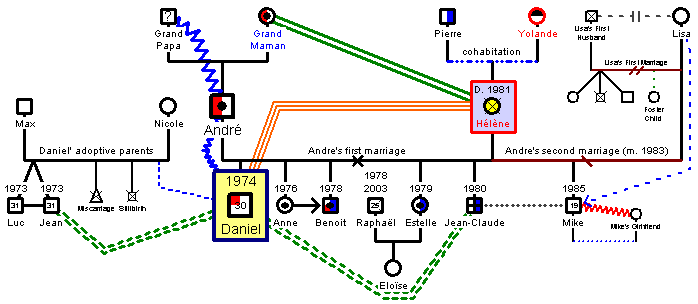.png)

FAMILY DYNAMICS
Intergenerational family dynamics is an important factor in understanding yourself as well as understanding your family. This includes developing an appreciation for intergenerational trauma in your family and how it affects you. One of the ways I do this is by creating a genogram with clients. Think of a family tree but with emotions, events and patterns instead of pictures. A good genogram provides a rich history of family nuances. They help explain how patterns and problems evolve and why they are often repeated through the generations.
The Genogram is one approach to better understanding intergenerational family dynamics and has a myriad of different uses for individual clients. Monica McGoldrick, in her book Genograms: Assessment and Intervention, notes the many uses genograms serve to:
-
Elicit family narratives and expand cultural stories
-
Reframe and detoxify family legacies
-
Discover unique strengths and resources
-
Look at key family or personal events that were life changing
-
Sensitize clinicians to systemic issues
-
Uncover sources of current dysfunction
-
Find sources of resilience
-
Place the current issue in the context of the family evolutionary patterns
The list really goes on and on. The genogram shows patterns vertically and horizontally. They expand your mind to see multiple patterns at the same time and how they impact one another. Family patterns not only grow from past generations, but according to Goldrick, via larger social structures like religion, politics, gender, race, ethnicity, socioeconomic status, schooling, etc.
